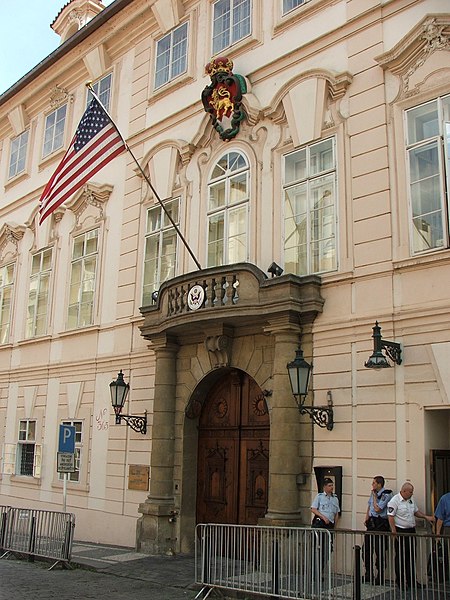Embassy of the United States, Prague
Czech Republic–United States relationsCzech building and structure stubsCzechoslovakia–United States relationsDiplomatic missions in PragueDiplomatic missions of the United States ... and 1 more
United States government stubs

The Embassy of the United States of America in Prague is the diplomatic mission of the United States of America in the Czech Republic. The chancery is located on Vlašská street in Malá Strana, Prague, where it occupies the historic Schönborn Palace and possesses an extensive garden.The premises also include the American Center, a public research facility, library and venue for lectures on American history, politics, science and culture. Past lecturers include Greil Marcus, Patricia Hampl, David Woodard, Gene Deitch and many others.
Excerpt from the Wikipedia article Embassy of the United States, Prague (License: CC BY-SA 3.0, Authors, Images).Embassy of the United States, Prague
Vlašská, Prague Lesser Town
Geographical coordinates (GPS) Address Nearby Places Show on map
Geographical coordinates (GPS)
| Latitude | Longitude |
|---|---|
| N 50.087075 ° | E 14.401133333333 ° |
Address
Schönbornský palác (Colloredovský palác)
Vlašská
118 00 Prague, Lesser Town
Prague, Czechia
Open on Google Maps











